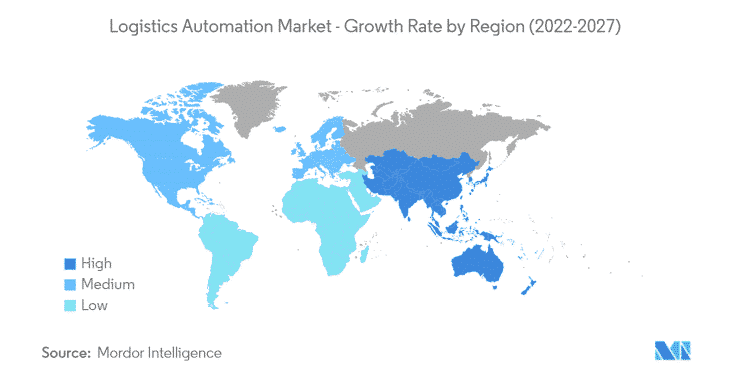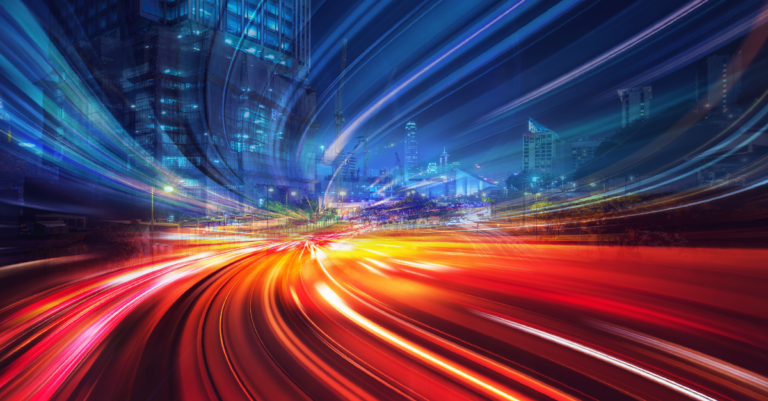Rise of Automation and AI
Automation and artificial intelligence (AI) are on our trend radar for some years now. In 2023 it is becoming more common in a variety of processes. Automation, which is simply a machine performing a series of jobs, has been around for decades. Automation employs technology to reduce the need for human intervention. Because automation lacks brains, the machinery can only perform the duties that have been specifically programmed for it.

Artificial intelligence (AI), on the other hand, tries to mimic characteristics of human intelligence and has the potential to “learn” on its own to assist with more difficult, complex tasks. AI still requires some human input, but it also use machine learning to make judgments on its own, without direct supervision.
Both Automation and AI are disrupting the entire Logistics Supply Chain, not just the warehousing, picking, and sorting functions. In an industry where the flow of goods and demand forecasts is often difficult to predict due to multiple factors it is crucial to gain agility by having flexibility.
Threatened not only by the difficult situation on the labor market, businesses or processes aim for certainty against unseen events or not foreseeable customer behavior. Thanks to Automation and AI a lot of tasks can be automated and therefore adapted to change. Both trends, which will continue to be significant as a logistics trend 2023 and beyond, will be extremely beneficial in optimizing time to make better choices and deliver superior service to clients as demand and competition in- or decrease.
Evolve Digitalization
There are endless ways of digitalization within the logistics industry and let alone Saloodo! has a wide spectrum of options, first of all offering shippers and carriers a digital logistics platform where they can connect and simplify their businesses. Beside digital platforms we discovered the trend to digitize to adapt to difficult working conditions. Labor force in 2022 was already experiencing the lowest level ever and 2023 is not going to improve.
Thus, for our future of work the most recent warehouse robots are already sufficiently delicate that they may be deployed alongside human workers in a logistics centre without endangering their safety. Robots may also become important features in the future supply chain for loading and unloading delivery trucks. Self-driving delivery vans can operate for 24 hours, even in inclement weather, without the need for drivers to take breaks—and they can save fuel with their autonomous driving mode. Last but not least self-driving forklift trucks could also be used for heavy-duty labour in warehouses.
Higher transparency and visibilty
With the increase of digitalization come possibilities to obtain insight with data and surveillance. Within the EU, the Supply Chain Law came into act in 2021 and will influence businesses and their supply chain by being held responsible for obtaining human rights and sustainability within their whole supply chain. From the beginning of 2023 companies with a workforce of at least 3,000 in a first step will step into focus to avoid child labour, exploitation, discrimination and inadequate labour law protection at all costs. Environmental destruction is also covered by the bill – illegal logging, inappropriate use of pesticides, the contamination of water resources and air pollution.
Having full transparency and visibility in the supply chain a young concept, starting to evolve only maximum 15 years ago. As technologies improve and pressure mounts to share supply chain data, it is moving from optional to required. In 2023 and beyond, supply chain visibility needs to take another step forward using real-time data integration from end-to-end.
More Essential Sustainabilty
Sustainability is and will be an essential factor for all logistics businesses. It is becoming increasingly vital to have a decarbonization-oriented operation, both for the public at large and for consumers. Pollution is a public concern, thus it will play a significant role in logistics.
In the end of 2022 the DPDHL launched their the “GoGreen Plus” option as an upgrade to every customer order. The aim is to use an climate change “insetting” approach to prevent harmful climate gases from being produced in the first place to the extent they have been to date. In the first step, this will be achieved by using alternative fuels for the larger vehicles in long-distance and local transport. This is supplemented by the use of electric vehicles. Through these measures, DHL is reducing the amount of carbon dioxide that would be generated by transporting the sender’s goods. Packing stations with lower power consumption or the use of solar energy for operation are important sustainable aspects.









